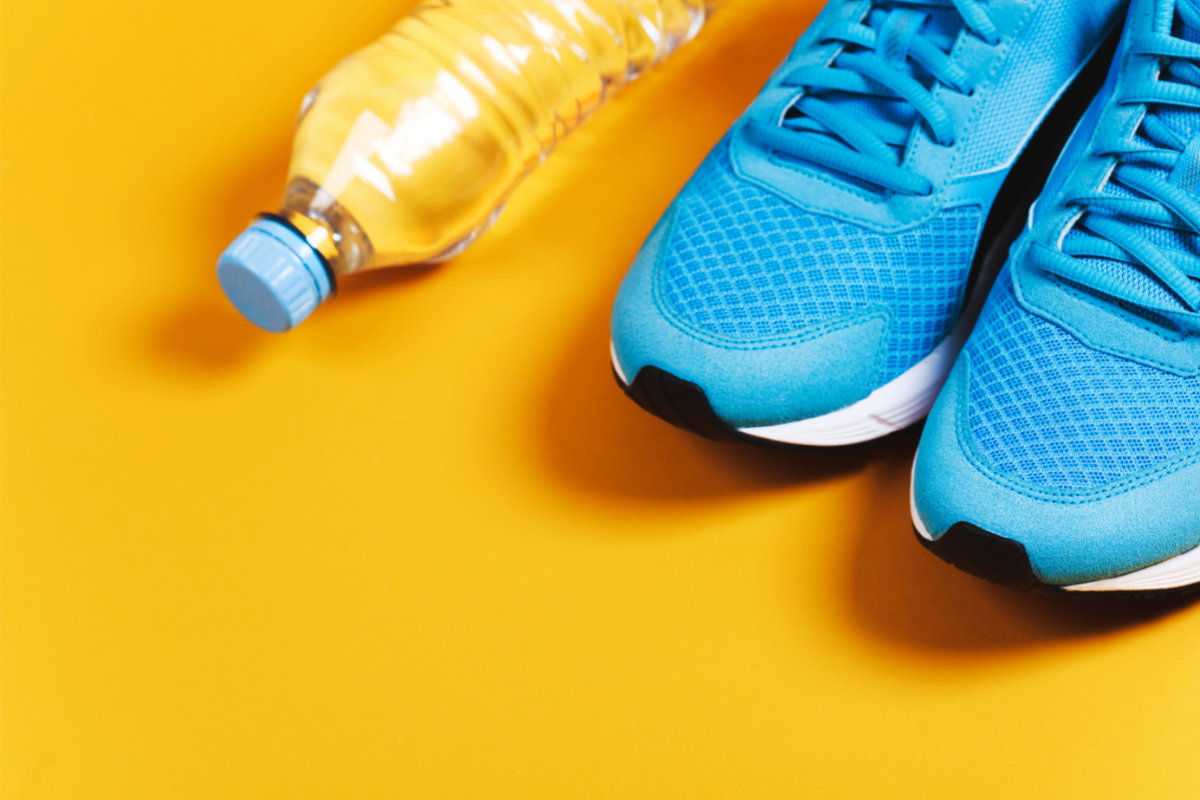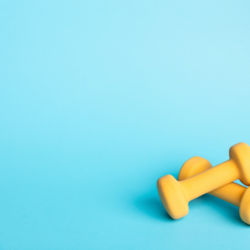It’s high time you got your life together, got back into sport and did some simple but effective physical exercise. You don’t have to follow a specific rhythm, but you can have fun while optimising your health. What’s more, regular exercise helps to shape your body as well as your mind.
Why resume sport gradually?
Resuming physical activity after a period of inactivity is not a trivial matter. It’s crucial to adopt a gradual approach for a number of reasons. Firstly, it allows your body to get used to physical effort again. After a break, even a short one, the body loses some of its physical condition, including muscular strength, endurance and flexibility. A gradual return to exercise helps to rebuild these capacities smoothly, minimising the risk of injury.
What’s more, a gradual resumption helps to re-establish sporting habits without causing overexertion. Overexertion can occur when you put too much pressure on your body without giving it enough time to recover. By gradually increasing the intensity and duration of physical activity, you give your body time to adapt and recover, which is crucial for healthy and sustainable fitness development.
Finally, a gradual return to exercise is also good for your mental health. It helps to avoid discouragement, often caused by unrealistic expectations or immediate results. By setting progressive, achievable goals, you increase your chances of success and enjoyment in your sporting journey, which is essential for maintaining a regular exercise routine.
The risks of restarting too quickly
Getting back into sport too quickly can entail a number of risks, both physical and mental. The most obvious risk is injury. When you return to sport intensively after a break, your muscles, tendons and joints can be put under excessive stress, which can lead to sprains, muscle tears or other injuries. These injuries not only delay your progress but can also require significant healing time.
Another risk of recovering too quickly is overwork or chronicfatigue syndrome. This can manifest itself as persistent fatigue, reduced sporting performance and loss of motivation. This syndrome is often the result of an imbalance between training, recovery and the other demands of daily life.
On a mental level, going back to training too quickly can also lead to frustration and discouragement. If the expected results are not immediate, this can lead to a loss of motivation and an early abandonment of physical activity, which is counter-productive for establishing a long-term exercise routine.
Mental and physical preparation for a successful return to sport
Before resuming a sporting activity, both mental and physical preparation are essential. Mental preparation involves getting into a positive and determined frame of mind. It’s important to remember why you want to return to sport: to improve your health, your well-being, or perhaps to take on a personal challenge. Positive visualisation can be a powerful tool: imagine yourself succeeding in your training sessions and achieving your goals.
On the physical side, you need to prepare your body for exercise. This can start with light stretching exercises and low-intensity activities such as walking or yoga. These activities help to wake up the muscles and prepare them for more intensive exercise. It’s also essential to ensure that your body is sufficiently rested and recovered before starting a new sporting routine.
Set achievable goals
Setting achievable goals is a key part of preparing for a return to sport. These goals should be specific, measurable, achievable, realistic and time-bound (SMART). For example, instead of aiming to lose weight indefinitely, set yourself the goal of running for 30 minutes without stopping over the next three months. Well-defined goals will enable you to monitor your progress and stay motivated along the way.
It’s also important not to aim too high from the outset. Starting with modest goals and progressing slowly but surely is more beneficial and less discouraging.
The importance of a suitable diet
A healthy, balanced diet is crucial when it comes to getting back into sport. The right nutrients will help your body recover more quickly, boost your energy and improve your performance. A diet rich in protein, fruit and vegetables, whole grains and healthy fats is recommended.
It’s also important to stay hydrated. Water plays a crucial role in your body’s functioning, helping to transport nutrients into cells, regulate body temperature and lubricate joints.
It may also be wise to adjust your diet according to the intensity of your training. For example, if you’re planning an intense training session, a meal rich in carbohydrates can provide the energy you need. After exercise, a protein-rich meal can help with muscle repair.
Food supplements to help you get back into shape
To help you get back into sport with ease, there are some excellent food supplements on the market. Here are two worth mentioning.
EAFIT SPORT VITAMINS
Sport is the ideal way to get fit. To boost your efforts, there’s EAFIT SPORT VITAMINS. In fact, it’s a product that’s sure to help you achieve a more toned body.
It contains 12 vitamins and 7 minerals essential for your regular training. It contains vitamins C, E and B5. The formula also includes zinc, potassium, magnesium…
This product is recommended for reducing fatigue caused by sports training. In fact, thanks to the vitamin C and vitamins and minerals it contains, it meets all the body’s needs.
To increase its effectiveness, it is advisable to take 2 capsules a day, preferably in the morning with a large glass of water.
AKILEINE
To prepare your body for the fast pace of a sports session, warm up your muscles with AKILEINE SPORT START HEATING OIL.
This natural product will strengthen your muscles for easy adaptation to the pace of sport. This product is not recommended for pregnant women or children under 12. It is also important to avoid contact with eyes, wounds and mucous membranes, and to wash hands after application. To optimise the product’s effectiveness, remember to warm up every day with AKILEINE SPORT HEATING OIL.
Select the right sport for a safe return to training
Selecting the right sporting activity for a smooth resumption is essential and should take into account a number of factors, including your general state of health and personal goals. Research suggests that certain activities, in particular endurance sports and resistance exercise, are particularly beneficial for a smooth return after a period of inactivity, as indicated in the study “Safe Return to Exercise after COVID-19 Infection” published on PubMed. These activities are valued for their ability to improve cardiovascular fitness and muscular strength while minimising the risk of injury.
Sports recommended for a safe return to exercise:
- Walking: Walking is often recommended for a gentle return to sport. It’s a low-impact activity that can be adjusted according to your fitness level. It’s ideal for gradually building up your endurance.
- Yoga: Recommended for its benefits on flexibility, strength and balance, yoga can also help to reduce stress. This gentle sport is suitable for a wide range of physical conditions.
- Swimming: Swimming, which is included in the recommendations for post-heart transplant patients, is a complete sport that involves the whole body without impacting on the joints. It is excellent for improving strength and endurance.
- Cycling: Cycling is another low-impact activity that is effective in improving cardiovascular health and leg strength. It can be practised at different levels of intensity.
It is important to stress that the choice of activity should be personalised, taking into account each individual’s medical conditions, personal preferences and fitness goals.
Encouraging children and teenagers to engage in regular physical activity
Based on the results of the ESTEBAN study published in June 2019, Santé Publique France, in conjunction with the Ministry of Health and Prevention, the Ministry of Sport, the Olympic and Paralympic Games and the Paris 2024 Organising Committee, is launching a campaign this autumn designed to encourage children and teenagers to get moving and get away from their beloved screens!
Key findings of the ESTEBAN study :
Among children aged 6-17, only 50.7% of boys and 33.3% of girls achieved the WHO recommendation of at least 60 minutes of moderate to vigorous physical activity per day.
There is also a clear drop in physical activity after the age of 10, which is more marked among girls: in the 11-14 age group, 33.7% of teenagers and 20.2% of teenage girls meet this recommendation.
Furthermore, the proportion of young people spending 3 hours or more in front of a screen each day was 45% among 6-10 year-olds, 70% among 11-14 year-olds, 71% among girls and 87% among 15-17 year-old boys.
Encouraging children and teenagers to adopt these habits is all the more important given that they persist into adulthood. Adopting good habits early in life increases your chances of a healthy adult life!
Microbiota and muscles: when one influences the other… and vice versa!
A team of researchers from the University of Illinois – Urbana Champaign published an article in 2018 indicating that physical activity can modulate the composition and metabolic capacity of the intestinal microbiota in previously sedentary individuals. Lean and obese subjects were subjected to 6 weeks of endurance training with a controlled diet, followed by a 6-week period of return to a sedentary lifestyle. The results suggest that exercise training induces compositional and functional changes in the human intestinal microbiota, but these depend on whether exercise is maintained (the changes in the microbiota were reversed after the training stopped) and on obesity status. However, these changes appear to be uncorrelated with diet.
In contrast, another research team from the Joslin Diabetes Centre carried out a study on runners in the 2015 Boston Marathon : faecal samples were taken from one week before the race to one week after the event. The researchers researched the bacteria present in the runners’ microbiota, comparing it with that of sedentary people. Results: the scientists observed an increase in the relative abundance of Veillonella in the marathon runners after the marathon, and isolated a strain of Veillonella atypica from stool samples. And… the inoculation of mice with this strain significantly increased their treadmill running time!





